To be considered for inclusion in the Department of Nuclear Engineering Hall of Fame, inductees must have earned a degree from NE or have earned an engineering degree from another accredited engineering school or college with a sustained positive relationship with NE; have had at least ten years of engineering and/or other professional experience since earning their engineering degree; and be recognized for their accomplishments and contributions to the profession and to society by membership in honorary societies and receipt of special honors and awards from recognized national and international academic and/or industrial organizations.
Alan Icenhour
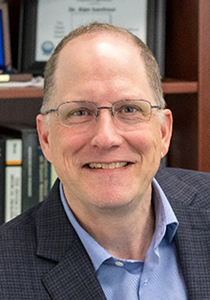 Alan Icenhour received his BS from North Carolina State University and his MS and PhD from the University of Tennessee. He has nearly four decades of experience with nuclear technologies including operations of nuclear facilities and reactors as well as research and development on a range of nuclear fuel cycle topics such as enrichment, radiochemical processing, stable and radioisotope production, nuclear fuels, radiation effects on materials, radioactive waste management, and nuclear security. He retired from Oak Ridge National Laboratory (ORNL) in 2023 after nearly 33 years of service. In his last role at ORNL, he was the deputy laboratory director for operations and the Chief Operating Officer. He held other prominent roles at ORNL including associate laboratory director of the Isotope Science and Engineering and Nuclear Science and Engineering Directorates and director of three ORNL research divisions. Prior to joining ORNL, he was a commissioned officer in the U.S. Navy, serving on a nuclear submarine. After leaving active duty, he continued as a reservist, retiring with the rank of Captain. He is a fellow of the American Nuclear Society, an NC State Distinguished Engineering Alumnus, and is an inductee of the NC State Nuclear Engineering Wall of Fame.
Alan Icenhour received his BS from North Carolina State University and his MS and PhD from the University of Tennessee. He has nearly four decades of experience with nuclear technologies including operations of nuclear facilities and reactors as well as research and development on a range of nuclear fuel cycle topics such as enrichment, radiochemical processing, stable and radioisotope production, nuclear fuels, radiation effects on materials, radioactive waste management, and nuclear security. He retired from Oak Ridge National Laboratory (ORNL) in 2023 after nearly 33 years of service. In his last role at ORNL, he was the deputy laboratory director for operations and the Chief Operating Officer. He held other prominent roles at ORNL including associate laboratory director of the Isotope Science and Engineering and Nuclear Science and Engineering Directorates and director of three ORNL research divisions. Prior to joining ORNL, he was a commissioned officer in the U.S. Navy, serving on a nuclear submarine. After leaving active duty, he continued as a reservist, retiring with the rank of Captain. He is a fellow of the American Nuclear Society, an NC State Distinguished Engineering Alumnus, and is an inductee of the NC State Nuclear Engineering Wall of Fame.
Loong Yong
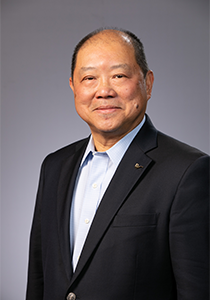 Loong Yong received his PhD in nuclear engineering from the University of Tennessee under the advisement of Professor Emeritus Laurence Miller. Yong is the founder and owner of Spectra Tech, Inc., a 300-person engineering company that provides services in nuclear security, environmental cleanup, and nuclear energy across the US and in several countries. He serves on the board of directors of Waste Management Symposia, East Tennessee Economic Council, Oak Ridge Civic Music Association, and the Guitar Foundation of America. In 2023, Yong was appointed to the Tennessee Governor’s Nuclear Energy Advisory Council.
Loong Yong received his PhD in nuclear engineering from the University of Tennessee under the advisement of Professor Emeritus Laurence Miller. Yong is the founder and owner of Spectra Tech, Inc., a 300-person engineering company that provides services in nuclear security, environmental cleanup, and nuclear energy across the US and in several countries. He serves on the board of directors of Waste Management Symposia, East Tennessee Economic Council, Oak Ridge Civic Music Association, and the Guitar Foundation of America. In 2023, Yong was appointed to the Tennessee Governor’s Nuclear Energy Advisory Council.
Laurence F. Miller
 Laurence Miller received his PhD in nuclear engineering from Texas A&M and served UTNE as faculty member for close to 50 years, retiring with Emeritus status. He was renowned for his wide-ranging expertise as he taught classes on 11 different topics and chaired the committees of 104 MS and PhD graduate students. His scholarship was recognized by both teaching and research awards at the departmental, college, and university levels. Miller held national leadership positions at numerous ANS meetings and conferences and served as the chair of the ANS Radiation Protection and Shielding Division. Locally, he served as Chair of the ANS Oak Ridge Section and as President of the East Tennessee Chapter of the Health Physics Society. Miller was highly published and was awarded a patent related to medical physics treatment planning.
Laurence Miller received his PhD in nuclear engineering from Texas A&M and served UTNE as faculty member for close to 50 years, retiring with Emeritus status. He was renowned for his wide-ranging expertise as he taught classes on 11 different topics and chaired the committees of 104 MS and PhD graduate students. His scholarship was recognized by both teaching and research awards at the departmental, college, and university levels. Miller held national leadership positions at numerous ANS meetings and conferences and served as the chair of the ANS Radiation Protection and Shielding Division. Locally, he served as Chair of the ANS Oak Ridge Section and as President of the East Tennessee Chapter of the Health Physics Society. Miller was highly published and was awarded a patent related to medical physics treatment planning.
James C. Robinson
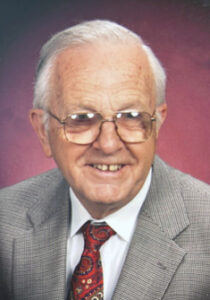 James (Jim/Robbie) C. Robinson came to UT as a student in 1956 after serving in the US Navy. He taught courses during graduate school, and upon earning his PhD in 1968 served on the faculty until leaving as a full professor in 1978. In 1975, he co-founded Technology for Energy Company (TEC) and later worked at CSI (now Emerson Electric) until he retired in 2010. During his career, Robinson spent two decades consulting with the Oak Ridge National Laboratory Instrumentation & Controls and Neutron Physics groups, served on the Three Mile Island Unit II Industry Advisory Group, and authored over 250 technical journal articles. His career excelled in research and development of new products, which led to many patents. Robinson is a registered Professional Engineer in the state of Tennessee, a Fellow of the American Nuclear Society, and was the recipient of numerous university and national awards for his scholarship.
James (Jim/Robbie) C. Robinson came to UT as a student in 1956 after serving in the US Navy. He taught courses during graduate school, and upon earning his PhD in 1968 served on the faculty until leaving as a full professor in 1978. In 1975, he co-founded Technology for Energy Company (TEC) and later worked at CSI (now Emerson Electric) until he retired in 2010. During his career, Robinson spent two decades consulting with the Oak Ridge National Laboratory Instrumentation & Controls and Neutron Physics groups, served on the Three Mile Island Unit II Industry Advisory Group, and authored over 250 technical journal articles. His career excelled in research and development of new products, which led to many patents. Robinson is a registered Professional Engineer in the state of Tennessee, a Fellow of the American Nuclear Society, and was the recipient of numerous university and national awards for his scholarship.
Belle R. Upadhyaya
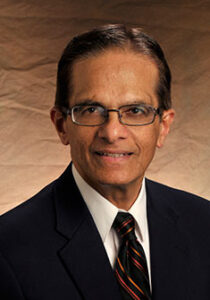 Belle Upadhyaya received his PhD from the University of California, San Diego. He is internationally recognized for his research of nuclear instrumentation and control, plant monitoring and diagnostics, and reliability and maintainability engineering. He served as a post-doctoral associate and professor of nuclear engineering at the University of Tennessee for more than 40 years and was instrumental in establishing the UT Reliability and Maintainability Center. Upadhyaya is a Fellow of the American Nuclear Society (ANS), Fellow of the International Society of Engineering Asset Management (ISEAM), and a Life Fellow of the International Society of Automation. He was awarded the ANS Don Miller Award for his contributions to nuclear reactor instrumentation and control as well as the Lifetime Achievement Award by the ISEAM. Upadhyaya received numerous UT awards, including the Alexander Prize.
Belle Upadhyaya received his PhD from the University of California, San Diego. He is internationally recognized for his research of nuclear instrumentation and control, plant monitoring and diagnostics, and reliability and maintainability engineering. He served as a post-doctoral associate and professor of nuclear engineering at the University of Tennessee for more than 40 years and was instrumental in establishing the UT Reliability and Maintainability Center. Upadhyaya is a Fellow of the American Nuclear Society (ANS), Fellow of the International Society of Engineering Asset Management (ISEAM), and a Life Fellow of the International Society of Automation. He was awarded the ANS Don Miller Award for his contributions to nuclear reactor instrumentation and control as well as the Lifetime Achievement Award by the ISEAM. Upadhyaya received numerous UT awards, including the Alexander Prize.
Norbert J. (Bert) Ackermann Jr.
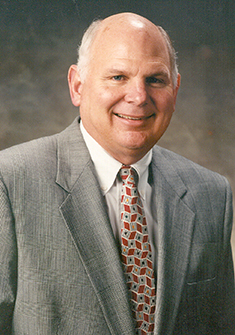 Bert Ackermann Jr. came to UT in the fall of 1960 to play football and study nuclear engineering. He earned the BS, MS, and PhD degrees from UT in 1965, 1967, and 1971 respectively. He was named to the Academic ALL-SEC Football Team in 1963 and 1964. He worked as a contract researcher at Oak Ridge National Laboratory while an undergraduate and graduate student at UT and was a Research Staff Member in Instrumentation and Controls 1968 through 1975 when he left to start Technology for Energy Corporation (TEC). Leaving TEC in 1983 Ackermann became a serial entrepreneur assisting Knoxville-area technical companies in start-up and growth activities. He was named Knoxville-Area Entrepreneur of the Year in 1990 and has led as CEO of Spinlab Utility Instrumentation, Inc.
Bert Ackermann Jr. came to UT in the fall of 1960 to play football and study nuclear engineering. He earned the BS, MS, and PhD degrees from UT in 1965, 1967, and 1971 respectively. He was named to the Academic ALL-SEC Football Team in 1963 and 1964. He worked as a contract researcher at Oak Ridge National Laboratory while an undergraduate and graduate student at UT and was a Research Staff Member in Instrumentation and Controls 1968 through 1975 when he left to start Technology for Energy Corporation (TEC). Leaving TEC in 1983 Ackermann became a serial entrepreneur assisting Knoxville-area technical companies in start-up and growth activities. He was named Knoxville-Area Entrepreneur of the Year in 1990 and has led as CEO of Spinlab Utility Instrumentation, Inc.
Fred R. Mynatt
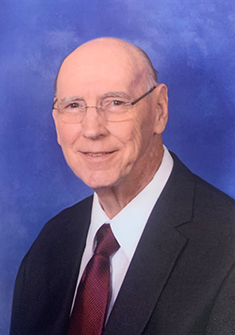 Fred R. Mynatt’s (BS ’62, MS ’64, PhD ’69) career at Lockheed Martin Energy Systems spanned from 1965 to 1997. In 1990, he was appointed the vice president for compliance, evaluations and policy. An expert in radiation shielding, he was the 1981 winner of DOE’s Ernest Orlando Lawrence Award for outstanding contributions in the field of atomic energy. His technical expertise includes nuclear reactor theory and operation, reactor safety, and scientific application of large-scale computers. He was elected a Fellow of the American Nuclear Society in 1978, is a past chairman of the society’s Radiation Protection and Shielding Division and a 1979 recipient of its technical achievement award. In 1980 he was honored as an Outstanding Engineering Alumnus by UT.
Fred R. Mynatt’s (BS ’62, MS ’64, PhD ’69) career at Lockheed Martin Energy Systems spanned from 1965 to 1997. In 1990, he was appointed the vice president for compliance, evaluations and policy. An expert in radiation shielding, he was the 1981 winner of DOE’s Ernest Orlando Lawrence Award for outstanding contributions in the field of atomic energy. His technical expertise includes nuclear reactor theory and operation, reactor safety, and scientific application of large-scale computers. He was elected a Fellow of the American Nuclear Society in 1978, is a past chairman of the society’s Radiation Protection and Shielding Division and a 1979 recipient of its technical achievement award. In 1980 he was honored as an Outstanding Engineering Alumnus by UT.
Teresa M. Robbins
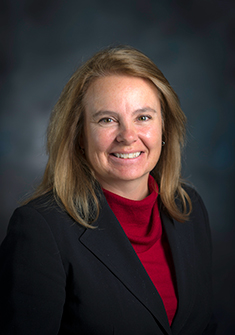 Teresa M. Robbins, manager of the National Nuclear Security Administration Production Office, played a key role in National Security by ensuring the safe, secure, and effective operations of the Y-12 National Security Complex and the Pantex Plant. A graduate of the department (BS, ’91), she held staff and leadership positions within the Department of Energy and NNSA in Washington, DC, the Savannah River Site, Rocky Flats Plant and Y-12. Robbins focused on nuclear facility operations, engineering, safety, risk analysis, and project management and was widely respected for her role in ensuring safe nuclear operations.
Teresa M. Robbins, manager of the National Nuclear Security Administration Production Office, played a key role in National Security by ensuring the safe, secure, and effective operations of the Y-12 National Security Complex and the Pantex Plant. A graduate of the department (BS, ’91), she held staff and leadership positions within the Department of Energy and NNSA in Washington, DC, the Savannah River Site, Rocky Flats Plant and Y-12. Robbins focused on nuclear facility operations, engineering, safety, risk analysis, and project management and was widely respected for her role in ensuring safe nuclear operations.
Lee Dodds
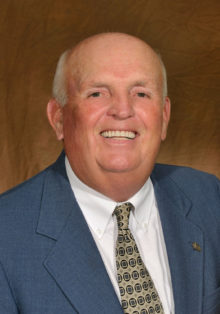 Lee Dodds is a former NE department head and is a three-time graduate of the department, having earned his bachelor’s in 1966, master’s in ’69, and his doctorate in ’70. He joined the department as an associate professor in 1976 after working for the Savannah River Laboratory, ORNL, and NASA. Dodds then became the department head in early 1997 and led the department to a top ten national ranking by U.S. News and World Report.
Lee Dodds is a former NE department head and is a three-time graduate of the department, having earned his bachelor’s in 1966, master’s in ’69, and his doctorate in ’70. He joined the department as an associate professor in 1976 after working for the Savannah River Laboratory, ORNL, and NASA. Dodds then became the department head in early 1997 and led the department to a top ten national ranking by U.S. News and World Report.
He is a past member of the Accreditation Board of the National Academy for Nuclear Training, the National Board of Directors of the American Nuclear Society, and the National Board of Directors of the Nuclear Energy Institute. Dodds has received many awards during his career including the Arthur Holly Compton National Teaching Award and the Robert L. Long Training Excellence Award. He is a Licensed Professional Engineer and a Fellow of the American Nuclear Society.
John Mihalczo
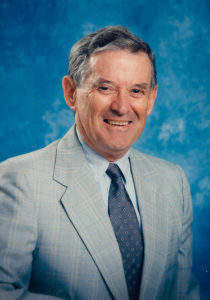 John Mihalczo earned his doctorate from the department in 1970. He is an ORNL Corporate Fellow and a true US nuclear pioneer. Mihalczo worked at the Curtiss Wright Corporation from 1953-58 on nuclear propulsion and a variety of other nuclear reactor applications. He joined the Neutron Physics Division of ORNL in 1958 as a researcher at the Oak Ridge Critical Experiments Facility, staying until he joined the ORNL Instrumentation and Controls Division in 1973.
John Mihalczo earned his doctorate from the department in 1970. He is an ORNL Corporate Fellow and a true US nuclear pioneer. Mihalczo worked at the Curtiss Wright Corporation from 1953-58 on nuclear propulsion and a variety of other nuclear reactor applications. He joined the Neutron Physics Division of ORNL in 1958 as a researcher at the Oak Ridge Critical Experiments Facility, staying until he joined the ORNL Instrumentation and Controls Division in 1973.
At the Critical Experiments Facility, he performed a wide variety of research related to reactor design, nuclear criticality safety, and reactor physics. His criticality experiments, development of nuclear weapons verification technologies, and other vital research is world-renown. For these contributions he was awarded Fellow of the American Nuclear Society.
Anthony R. (Tony) Buhl
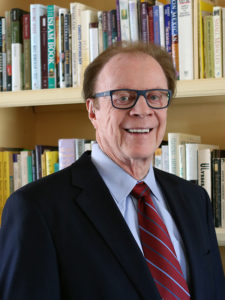 Buhl received his BS (’63), MS (’64), and PhD (’67) in Nuclear Engineering from UT. Upon graduation, he became a US Army Captain, worked at Oak Ridge National Laboratory, the Department of Energy in Washington, and then was Assistant Director of the Clinch River Breeder Reactor Project. He was the first Director of the US Nuclear Regulatory Commission’s Risk Analysis Division.
Buhl received his BS (’63), MS (’64), and PhD (’67) in Nuclear Engineering from UT. Upon graduation, he became a US Army Captain, worked at Oak Ridge National Laboratory, the Department of Energy in Washington, and then was Assistant Director of the Clinch River Breeder Reactor Project. He was the first Director of the US Nuclear Regulatory Commission’s Risk Analysis Division.
Stepping out of government, he joined friends from UT Engineering to be among the first owners of Technology for Energy. In the same week, President Carter asked Buhl to report to the Three Mile Island Control Room. Years later he was called to other nuclear crises, including Crystal River and Chernobyl. Following TMI, he served as Director of the IDCOR program, supported by seven nations and all nuclear utilities in the US to address reactor safety concerns. The US Senate Energy Committee assigned him to work in Russia and other places to explain the Chernobyl accident and to prevent additional threats. He worked six years with the senior management team on the design, construction and licensing of Texas Utilities’ Comanche Peak, including many hours in public with attorneys and intervenors.
He became CEO of an international public company, and then senior vice president of Kaiser-Hill, to take down “the most dangerous facility in the US,” the Rocky Flats Plutonium Production site, 11 miles from downtown Denver, safely, under budget and ahead of schedule. After starting EnergX, LLC, he directed the removal of fuel from 8 Hanford reactors in the K Basin Spent Fuel Facility and resolved longstanding engineering problems with the transition into cold vacuum drying. He also served as General Manager of the Transuranic Waste Processing Center, led it quickly through several VPPs, and within 5 years celebrated the first shipments of both low-level and high-level waste out of Oak Ridge.
He has served two terms on the Tickle College of Engineering’s Board of Advisers. He was named an ANS Fellow in 1985. He was honored with the UT College of Engineering’s Nathan Dougherty Award in 2012. He is a grateful Tennessean.
Tom Kerlin
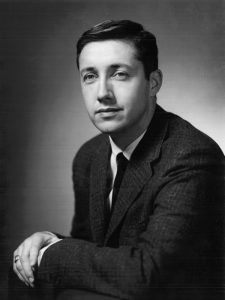 Tom Kerlin received his BS in Chemical Engineering from the University of South Carolina and his MS and PhD in Nuclear Engineering from the UT. He worked at Atomics International and ORNL before joining the faculty of the UT Nuclear Engineering Department. He served as Professor for over thirty years and as Department Head for eight years.
Tom Kerlin received his BS in Chemical Engineering from the University of South Carolina and his MS and PhD in Nuclear Engineering from the UT. He worked at Atomics International and ORNL before joining the faculty of the UT Nuclear Engineering Department. He served as Professor for over thirty years and as Department Head for eight years.
His research interests included reactor simulation, dynamic testing for model verification and instrumentation. He invented the method for in-situ response time testing for resistance thermometers used in pressurized water reactors. He performed over thirty on-line tests for model verification and sensor response in operating research and commercial reactors. He conceived and co-founded Analysis and Measurement Services Corp.
Gordon G. Fee
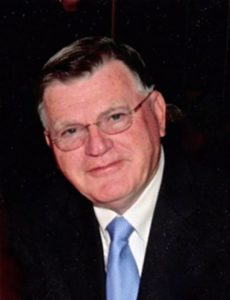 Gordon Fee earned his BS degree in Physics from Penn State University in 1956 and MS degree in Nuclear Engineering from UT in 1962.
Gordon Fee earned his BS degree in Physics from Penn State University in 1956 and MS degree in Nuclear Engineering from UT in 1962.
During his career, Fee held many management positions with Union Carbide and Lockheed Martin, including nine years as Plant Manager of Oak Ridge Y-12 National Security Complex and three years as Reactor Division Director for Oak Ridge National Laboratory.
He received many awards over the course of his career, including Penn State Alumni Fellow of the Eberly School of Science, Penn State Distinguished Alumni Fellow of the Eberly School of Science, Penn State Distinguished Alumni (the highest award to graduates), and recognition in 2013 by the Tennessee State Legislature for his post-retirement efforts to improve the state’s education system. He concluded his forty-year career as President of Lockheed Martin Energy Systems and continues his legacy of service and leadership as an Associate on UT’s Dean of Arts and Sciences advisory committee.
NE honored the inaugural class of the Nuclear Engineering Hall of Fame during the department’s spring 2017 awards banquet. The inductees all have made exceptional contributions to the nuclear engineering community through their technical innovations, scholarly activities, and leadership. View photos from the inaugural awards banquet.
Pietro F. Pasqua
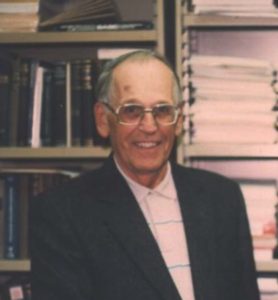 Pietro Pasqua was the founding Head of the UT Department of Nuclear Engineering in 1957 and served from 1957 to 1988. He received the BS degree in Mechanical Engineering from the University of Colorado, where he also played intercollegiate baseball. He received the MS degree in Mechanical Engineering from Northwestern University in 1947 and the PhD degree in Mechanical Engineering, also from Northwestern University, in 1952.
Pietro Pasqua was the founding Head of the UT Department of Nuclear Engineering in 1957 and served from 1957 to 1988. He received the BS degree in Mechanical Engineering from the University of Colorado, where he also played intercollegiate baseball. He received the MS degree in Mechanical Engineering from Northwestern University in 1947 and the PhD degree in Mechanical Engineering, also from Northwestern University, in 1952.
He is fondly remembered by faculty, staff, and students not only for his scholarly accomplishments and outstanding leadership, but also for his integrity, kindness, and dedication to teaching and learning. He was a genuine inspiration to all that knew him, and he will forever live in the hearts and minds of those he touched.
Wayne Coleman
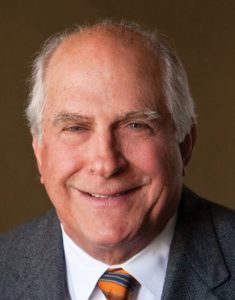 Wayne Coleman earned a BS of Nuclear Engineering in 1963, an MS in Nuclear Engineering in 1965, and a PhD in Nuclear Engineering in 1969, all from UT.
Wayne Coleman earned a BS of Nuclear Engineering in 1963, an MS in Nuclear Engineering in 1965, and a PhD in Nuclear Engineering in 1969, all from UT.
Coleman’s career in the nuclear industry spans almost forty years, including his time with the Army Nuclear Defense Laboratory. Following his military tour, he began work with a small firm of just fifteen people, then called Science Applications, Inc. He would devote more than thirty-five years of dedicated leadership to what became known as SAIC, serving in multiple roles and ending at his retirement as vice president of Science Applications Internal Corporation, which grew to more than 40,000 employees.
He has spent many years on the Board of Advisors for the Tickle College of Engineering and has given generous service in multiple capacities to UT.
Hash Hashemian
 In 1974, Hash Hashemian earned his first degree from Iran University with a BS in Physics. His educational and professional career took him to the United States, where he earned his MS degree in Nuclear Engineering at UT.
In 1974, Hash Hashemian earned his first degree from Iran University with a BS in Physics. His educational and professional career took him to the United States, where he earned his MS degree in Nuclear Engineering at UT.
Since then, he has demonstrated exceptional leadership and service to the nuclear power industry, specifically as founder and President of Analysis and Measurement Services Corporation, which provides equipment, training, and services for testing the instrumentation and control of nuclear power plants worldwide. He also continued his education, earning a Doctorate in Electrical Engineering from Lamar University in 2009. He also earned a PhD in Nuclear Engineering from Chalmers University of Technology, Sweden in 2010 and a PhD in Computer Engineering from the University of Western Ontario, Canada in 2011.
His research in academic and professional settings has taken him around the world for a number of international lectures and teaching opportunities and has resulted in nearly 150 publications.
Ken Piety
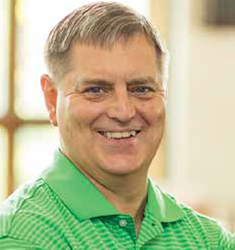 Ken Piety earned his BS in Nuclear Engineering in 1970 and his PhD in Nuclear Engineering in 1976, both from UT.
Ken Piety earned his BS in Nuclear Engineering in 1970 and his PhD in Nuclear Engineering in 1976, both from UT.
Piety has led a career of outstanding research and development of reliability enhancing technologies since his time as a student at UT. In the early 1980s, he co-founded Computational Systems, Inc. (CSI), which provides multiple services and products based on his research and expertise to industrial manufacturing facilities globally. At CSI, he provided exceptional leadership as Vice President of Engineering and Technology, serving more than twenty-five years in multiple roles through the transition of CSI as it became a subsidiary of Emerson Electric. He provided further exceptional service to Azima DLI for approximately 10 years as Vice President of Technology.
His pioneering work in vibration analysis and other predictive maintenance technologies has resulted in more than thirty patents and crucial innovations in diagnostic and reliability technologies in industrial manufacturing.
Jessie Roberson
 Jessie Hill Roberson received her BS in Nuclear Engineering in 1981 from UT.
Jessie Hill Roberson received her BS in Nuclear Engineering in 1981 from UT.
Roberson has demonstrated impressive service to the US government and the nuclear energy industry. Early in her career she worked at E.I Dupont and Georgia Power and later served as the youngest and first female manager for DOE’s Rocky Flats Field Office. Next she was nominated by President Bill Clinton to be a member of the Defense Nuclear Facilities Safety Board (DNFSB). She was later nominated by President George W. Bush as assistant secretary of the DOE, and later she was nominated as Vice Chairman of the DNFSB by President Barack Obama, who also nominated her to serve as Commissioner for the Nuclear Regulatory Commission. It is particularly noteworthy that she was nominated by three sitting presidents representing each party.
Her exceptional career has been defined by dedicated corporate leadership and government service to the nuclear engineering field in waste management, reactor operation, environmental restoration, and project management.